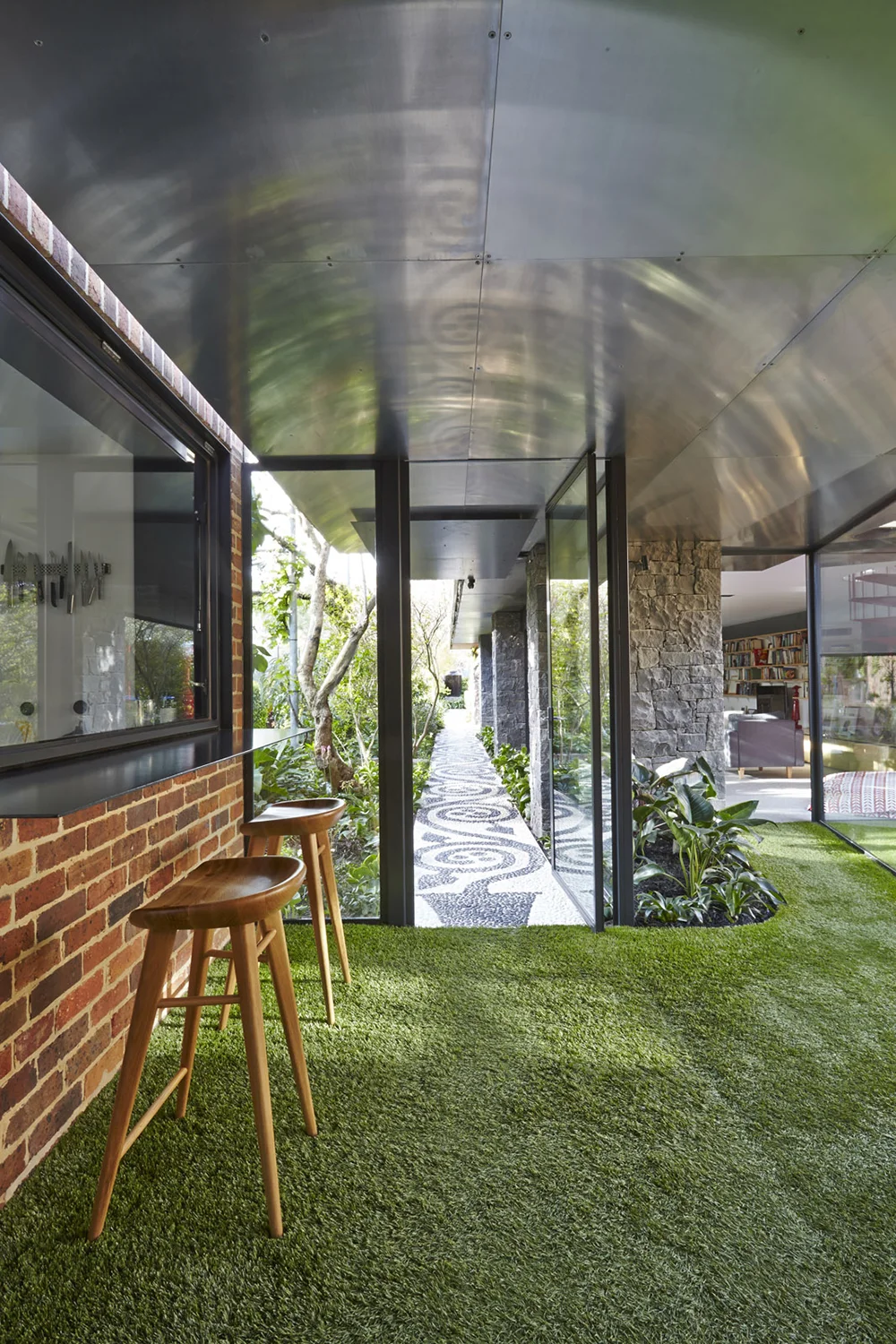Gothic Revival: Maynard Architects Designs the Walker House
/Snapshot: Based out of Melbourne, Australia, Andrew Maynard Architects reinvent an 1873 Gothic Revival picturesque home into an imaginatively modern residence.
There’s an old phrase that you should never judge a book by its cover – well, that can be true for architecture too. Walker House, designed by Andrew Maynard Architects, has a Gothic Revival picturesque façade with a distinctively contemporary interior. Built in 1873, the Walker House renovation represents the integration of century old design concepts with Andrew Maynard’s boldly progressive perspective.
Given the house’s 2003 addition of a studio/garage space, Maynard and his project architect Mark Austin, were presented with the challenge of combining two separate structures into one cohesive living space. They achieved this by creating a low transparent space that brings the outside in and the inside out. Here, the original brick exterior is showcased along with the garage’s stony exterior. A carpet made of AstroTurf connects the two units.
One of Walker House’s most beautiful features is its central courtyard filled with vines, trees, and unusual plants. Due to the giant windows and glass walls, this elaborate garden feels like part of the interior, especially in the old studio/garage area. It’s a casual yet modern living space filled with wall-to-wall rows of shelving. Although inside and warm, this lounge/library feels like an extension of the outer courtyard.
The kitchen and dining area is an equally elegant and open space remodeled with refined and simple furnishings. While the entire kitchen is entirely up to date, the sliver of a brick wall from the original home adds an element of age and character. The dining table, which is seated by the door to the courtyard, is a work of art and an accent piece in the large white space.
Given Andrew Maynard’s history of realizing imaginative ideas with meticulous precision, it’s no surprise that Walker House is so strikingly charming. Maynard demonstrates how innovative design can bring our past into our present.

























